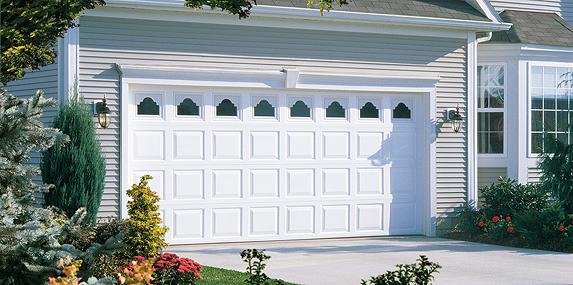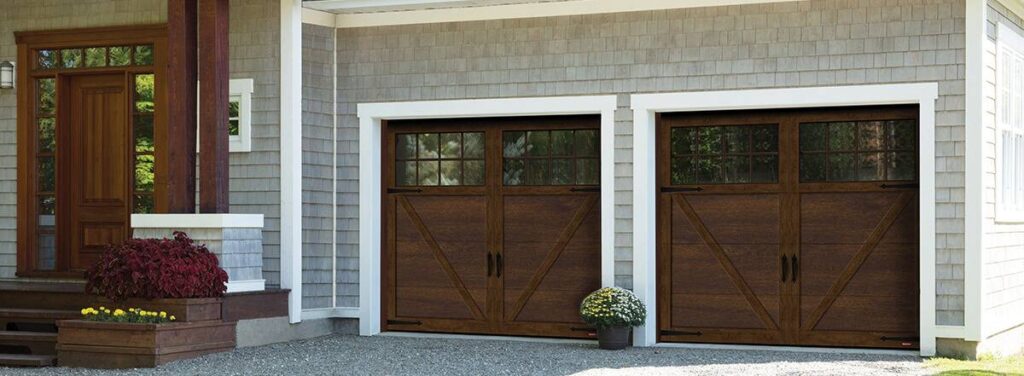The torsion spring is a critical component of a Garage Door Repair Knoxville TN, playing a pivotal role in balancing the door’s weight and facilitating smooth opening and closing.

When a torsion spring malfunctions, it can lead to operational issues, safety concerns, and potential damage to the door and other components. In this article, we’ll explore the top signs of a malfunctioning torsion garage door spring, helping homeowners identify potential problems and seek timely professional assistance.
1. Unbalanced Door Movement:
One of the primary functions of the torsion spring is to balance the garage door, allowing it to move smoothly and evenly. If you notice that one side of the door is lower than the other or that the door appears to be sagging, it may indicate an issue with the torsion spring. An unbalanced door not only affects the aesthetic appeal but can also lead to strain on the opener system and other components.
2. Difficulty in Opening or Closing
A properly functioning torsion spring ensures that the garage door can be opened and closed effortlessly. If you experience difficulty in lifting the door manually or if the door feels unusually heavy when using the automatic opener, it could be a sign of torsion spring malfunction. The spring may not be providing the necessary counterbalance, making the door operation more strenuous.
3. Visible Gaps or Gaps between Coils:
Inspect the torsion spring for any visible gaps or spaces between the coils. If you notice uneven spacing or a visible separation between coils, it may indicate that the spring is worn out or damaged. These gaps can compromise the spring’s effectiveness and lead to further issues with door movement.
4. Unusual Noises during Operation:
Torsion springs should operate quietly and smoothly. If you start hearing unusual noises such as creaking, grinding, or snapping sounds when opening or closing the garage door, it could be a sign of torsion spring issues. These noises may indicate friction, misalignment, or even a potential break in the spring.
5. Visible Wear and Tear:
Perform a visual inspection of the torsion spring for any signs of wear and tear. Look for rust, corrosion, or visible damage to the coils. Worn-out or damaged springs can compromise their structural integrity, leading to a higher risk of failure. If you observe any visible issues, it’s advisable to seek professional assistance promptly.
6. Lack of Tension or Tension Irregularities:
The torsion spring should be under tension when the garage door is closed. If you can easily move the spring by hand when the door is in the closed position, it may indicate a lack of tension. Conversely, irregular tension, where one side feels tighter than the other, can also be a sign of torsion spring problems.
7. Door Doesn’t Stay Open or Closed:
When a torsion spring is functioning correctly, it provides the necessary counterbalance to keep the garage door open or closed as desired. If the door struggles to stay in the open position or unexpectedly closes, it may indicate a loss of tension in the torsion spring. This issue poses safety risks and requires immediate attention.
8. Sudden Door Movement:
If you notice sudden or jerky movements when opening or closing the garage door, it could be a result of torsion spring issues. A malfunctioning spring may release tension unevenly, leading to erratic door movements. Sudden movements pose safety hazards and should be addressed promptly by a qualified professional.
9. Visible Rust or Corrosion:
Torsion springs are typically exposed to the elements, and over time, they can develop rust or corrosion. Rust weakens the structural integrity of the spring and accelerates wear. If you observe significant rust on the torsion spring, it’s crucial to have it inspected and replaced by a professional to ensure continued reliability.
10. Inconsistent Gap between the Coils:
The coils of a torsion spring should maintain a consistent gap throughout their length. If you notice variations in the gap between coils, such as tight areas followed by loose sections, it may indicate a problem with the spring’s integrity. Inconsistencies in coil spacing can lead to uneven tension and compromised functionality.
11. Visible Wear on the Cable Drum:
The cable drum is another component of the garage door system that works in conjunction with the torsion spring. Inspect the cable drum for any signs of wear, fraying, or damage. A damaged cable drum can affect the performance of the torsion spring and lead to operational issues.
12. Age of the Torsion Springs:
Torsion springs have a limited lifespan, typically ranging from 7 to 15 years, depending on usage and environmental conditions. If your torsion springs are approaching or exceeding their expected lifespan, it’s advisable to proactively replace them, even if you haven’t noticed any specific signs of malfunction. Preventive replacement can avoid sudden failures and enhance the overall safety of the garage door system.
Conclusion:
Recognizing the signs of a malfunctioning torsion Garage Door Spring Repair Knoxville TN is crucial for maintaining the safety and reliability of your garage door system. Homeowners should be vigilant for any unusual movements, sounds, or visual indicators that suggest torsion spring issues. In the event of any suspected problems, seeking the expertise of a professional garage door repair service is essential. Prompt identification and repair of torsion spring issues not only ensure the continued functionality of the garage door but also contribute to the overall safety and longevity of the entire system.
Camco Commercial Door Company
853 East Wolf Valley Rd. Heiskell, TN 37754
1-865-776-9455

